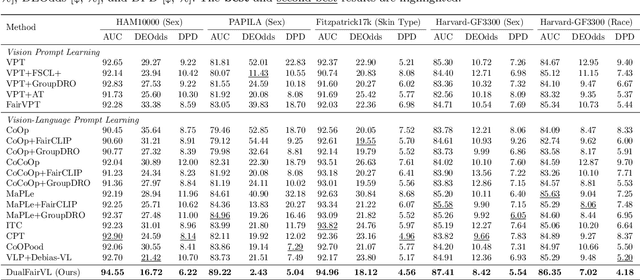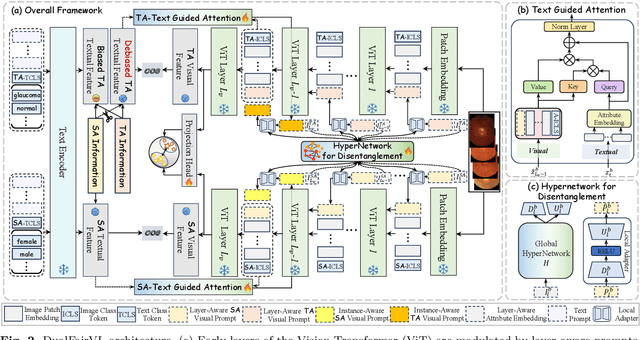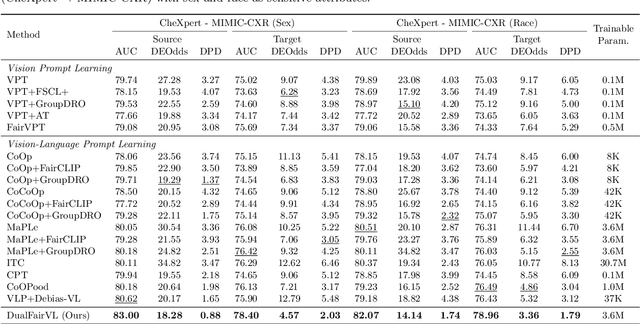Zhiyong Wang
GARDO: Reinforcing Diffusion Models without Reward Hacking
Dec 30, 2025Abstract:Fine-tuning diffusion models via online reinforcement learning (RL) has shown great potential for enhancing text-to-image alignment. However, since precisely specifying a ground-truth objective for visual tasks remains challenging, the models are often optimized using a proxy reward that only partially captures the true goal. This mismatch often leads to reward hacking, where proxy scores increase while real image quality deteriorates and generation diversity collapses. While common solutions add regularization against the reference policy to prevent reward hacking, they compromise sample efficiency and impede the exploration of novel, high-reward regions, as the reference policy is usually sub-optimal. To address the competing demands of sample efficiency, effective exploration, and mitigation of reward hacking, we propose Gated and Adaptive Regularization with Diversity-aware Optimization (GARDO), a versatile framework compatible with various RL algorithms. Our key insight is that regularization need not be applied universally; instead, it is highly effective to selectively penalize a subset of samples that exhibit high uncertainty. To address the exploration challenge, GARDO introduces an adaptive regularization mechanism wherein the reference model is periodically updated to match the capabilities of the online policy, ensuring a relevant regularization target. To address the mode collapse issue in RL, GARDO amplifies the rewards for high-quality samples that also exhibit high diversity, encouraging mode coverage without destabilizing the optimization process. Extensive experiments across diverse proxy rewards and hold-out unseen metrics consistently show that GARDO mitigates reward hacking and enhances generation diversity without sacrificing sample efficiency or exploration, highlighting its effectiveness and robustness.
AI-Driven Prediction of Cancer Pain Episodes: A Hybrid Decision Support Approach
Dec 18, 2025Abstract:Lung cancer patients frequently experience breakthrough pain episodes, with up to 91% requiring timely intervention. To enable proactive pain management, we propose a hybrid machine learning and large language model pipeline that predicts pain episodes within 48 and 72 hours of hospitalization using both structured and unstructured electronic health record data. A retrospective cohort of 266 inpatients was analyzed, with features including demographics, tumor stage, vital signs, and WHO-tiered analgesic use. The machine learning module captured temporal medication trends, while the large language model interpreted ambiguous dosing records and free-text clinical notes. Integrating these modalities improved sensitivity and interpretability. Our framework achieved an accuracy of 0.874 (48h) and 0.917 (72h), with an improvement in sensitivity of 8.6% and 10.4% due to the augmentation of large language model. This hybrid approach offers a clinically interpretable and scalable tool for early pain episode forecasting, with potential to enhance treatment precision and optimize resource allocation in oncology care.
Toward Robust Medical Fairness: Debiased Dual-Modal Alignment via Text-Guided Attribute-Disentangled Prompt Learning for Vision-Language Models
Aug 26, 2025



Abstract:Ensuring fairness across demographic groups in medical diagnosis is essential for equitable healthcare, particularly under distribution shifts caused by variations in imaging equipment and clinical practice. Vision-language models (VLMs) exhibit strong generalization, and text prompts encode identity attributes, enabling explicit identification and removal of sensitive directions. However, existing debiasing approaches typically address vision and text modalities independently, leaving residual cross-modal misalignment and fairness gaps. To address this challenge, we propose DualFairVL, a multimodal prompt-learning framework that jointly debiases and aligns cross-modal representations. DualFairVL employs a parallel dual-branch architecture that separates sensitive and target attributes, enabling disentangled yet aligned representations across modalities. Approximately orthogonal text anchors are constructed via linear projections, guiding cross-attention mechanisms to produce fused features. A hypernetwork further disentangles attribute-related information and generates instance-aware visual prompts, which encode dual-modal cues for fairness and robustness. Prototype-based regularization is applied in the visual branch to enforce separation of sensitive features and strengthen alignment with textual anchors. Extensive experiments on eight medical imaging datasets across four modalities show that DualFairVL achieves state-of-the-art fairness and accuracy under both in- and out-of-distribution settings, outperforming full fine-tuning and parameter-efficient baselines with only 3.6M trainable parameters. Code will be released upon publication.
PUMPS: Skeleton-Agnostic Point-based Universal Motion Pre-Training for Synthesis in Human Motion Tasks
Jul 27, 2025Abstract:Motion skeletons drive 3D character animation by transforming bone hierarchies, but differences in proportions or structure make motion data hard to transfer across skeletons, posing challenges for data-driven motion synthesis. Temporal Point Clouds (TPCs) offer an unstructured, cross-compatible motion representation. Though reversible with skeletons, TPCs mainly serve for compatibility, not for direct motion task learning. Doing so would require data synthesis capabilities for the TPC format, which presents unexplored challenges regarding its unique temporal consistency and point identifiability. Therefore, we propose PUMPS, the primordial autoencoder architecture for TPC data. PUMPS independently reduces frame-wise point clouds into sampleable feature vectors, from which a decoder extracts distinct temporal points using latent Gaussian noise vectors as sampling identifiers. We introduce linear assignment-based point pairing to optimise the TPC reconstruction process, and negate the use of expensive point-wise attention mechanisms in the architecture. Using these latent features, we pre-train a motion synthesis model capable of performing motion prediction, transition generation, and keyframe interpolation. For these pre-training tasks, PUMPS performs remarkably well even without native dataset supervision, matching state-of-the-art performance. When fine-tuned for motion denoising or estimation, PUMPS outperforms many respective methods without deviating from its generalist architecture.
Multi-Objective Trajectory Planning for a Robotic Arm in Curtain Wall Installation
Jul 23, 2025Abstract:In the context of labor shortages and rising costs, construction robots are regarded as the key to revolutionizing traditional construction methods and improving efficiency and quality in the construction industry. In order to ensure that construction robots can perform tasks efficiently and accurately in complex construction environments, traditional single-objective trajectory optimization methods are difficult to meet the complex requirements of the changing construction environment. Therefore, we propose a multi-objective trajectory optimization for the robotic arm used in the curtain wall installation. First, we design a robotic arm for curtain wall installation, integrating serial, parallel, and folding arm elements, while considering its physical properties and motion characteristics. In addition, this paper proposes an NSGA-III-FO algorithm (NSGA-III with Focused Operator, NSGA-III-FO) that incorporates a focus operator screening mechanism to accelerate the convergence of the algorithm towards the Pareto front, thereby effectively balancing the multi-objective constraints of construction robots. The proposed algorithm is tested against NSGA-III, MOEA/D, and MSOPS-II in ten consecutive trials on the DTLZ3 and WFG3 test functions, showing significantly better convergence efficiency than the other algorithms. Finally, we conduct two sets of experiments on the designed robotic arm platform, which confirm the efficiency and practicality of the NSGA-III-FO algorithm in solving multi-objective trajectory planning problems for curtain wall installation tasks.
Federated In-Context Learning: Iterative Refinement for Improved Answer Quality
Jun 09, 2025Abstract:For question-answering (QA) tasks, in-context learning (ICL) enables language models to generate responses without modifying their parameters by leveraging examples provided in the input. However, the effectiveness of ICL heavily depends on the availability of high-quality examples, which are often scarce due to data privacy constraints, annotation costs, and distribution disparities. A natural solution is to utilize examples stored on client devices, but existing approaches either require transmitting model parameters - incurring significant communication overhead - or fail to fully exploit local datasets, limiting their effectiveness. To address these challenges, we propose Federated In-Context Learning (Fed-ICL), a general framework that enhances ICL through an iterative, collaborative process. Fed-ICL progressively refines responses by leveraging multi-round interactions between clients and a central server, improving answer quality without the need to transmit model parameters. We establish theoretical guarantees for the convergence of Fed-ICL and conduct extensive experiments on standard QA benchmarks, demonstrating that our proposed approach achieves strong performance while maintaining low communication costs.
Learning Fine-Grained Geometry for Sparse-View Splatting via Cascade Depth Loss
May 28, 2025Abstract:Novel view synthesis is a fundamental task in 3D computer vision that aims to reconstruct realistic images from a set of posed input views. However, reconstruction quality degrades significantly under sparse-view conditions due to limited geometric cues. Existing methods, such as Neural Radiance Fields (NeRF) and the more recent 3D Gaussian Splatting (3DGS), often suffer from blurred details and structural artifacts when trained with insufficient views. Recent works have identified the quality of rendered depth as a key factor in mitigating these artifacts, as it directly affects geometric accuracy and view consistency. In this paper, we address these challenges by introducing Hierarchical Depth-Guided Splatting (HDGS), a depth supervision framework that progressively refines geometry from coarse to fine levels. Central to HDGS is a novel Cascade Pearson Correlation Loss (CPCL), which aligns rendered and estimated monocular depths across multiple spatial scales. By enforcing multi-scale depth consistency, our method substantially improves structural fidelity in sparse-view scenarios. Extensive experiments on the LLFF and DTU benchmarks demonstrate that HDGS achieves state-of-the-art performance under sparse-view settings while maintaining efficient and high-quality rendering
Efficient Controllable Diffusion via Optimal Classifier Guidance
May 27, 2025Abstract:The controllable generation of diffusion models aims to steer the model to generate samples that optimize some given objective functions. It is desirable for a variety of applications including image generation, molecule generation, and DNA/sequence generation. Reinforcement Learning (RL) based fine-tuning of the base model is a popular approach but it can overfit the reward function while requiring significant resources. We frame controllable generation as a problem of finding a distribution that optimizes a KL-regularized objective function. We present SLCD -- Supervised Learning based Controllable Diffusion, which iteratively generates online data and trains a small classifier to guide the generation of the diffusion model. Similar to the standard classifier-guided diffusion, SLCD's key computation primitive is classification and does not involve any complex concepts from RL or control. Via a reduction to no-regret online learning analysis, we show that under KL divergence, the output from SLCD provably converges to the optimal solution of the KL-regularized objective. Further, we empirically demonstrate that SLCD can generate high quality samples with nearly the same inference time as the base model in both image generation with continuous diffusion and biological sequence generation with discrete diffusion. Our code is available at https://github.com/Owen-Oertell/slcd
Unsupervised Cross-Domain 3D Human Pose Estimation via Pseudo-Label-Guided Global Transforms
Apr 17, 2025Abstract:Existing 3D human pose estimation methods often suffer in performance, when applied to cross-scenario inference, due to domain shifts in characteristics such as camera viewpoint, position, posture, and body size. Among these factors, camera viewpoints and locations {have been shown} to contribute significantly to the domain gap by influencing the global positions of human poses. To address this, we propose a novel framework that explicitly conducts global transformations between pose positions in the camera coordinate systems of source and target domains. We start with a Pseudo-Label Generation Module that is applied to the 2D poses of the target dataset to generate pseudo-3D poses. Then, a Global Transformation Module leverages a human-centered coordinate system as a novel bridging mechanism to seamlessly align the positional orientations of poses across disparate domains, ensuring consistent spatial referencing. To further enhance generalization, a Pose Augmentor is incorporated to address variations in human posture and body size. This process is iterative, allowing refined pseudo-labels to progressively improve guidance for domain adaptation. Our method is evaluated on various cross-dataset benchmarks, including Human3.6M, MPI-INF-3DHP, and 3DPW. The proposed method outperforms state-of-the-art approaches and even outperforms the target-trained model.
Extended Short- and Long-Range Mesh Learning for Fast and Generalized Garment Simulation
Apr 16, 2025Abstract:3D garment simulation is a critical component for producing cloth-based graphics. Recent advancements in graph neural networks (GNNs) offer a promising approach for efficient garment simulation. However, GNNs require extensive message-passing to propagate information such as physical forces and maintain contact awareness across the entire garment mesh, which becomes computationally inefficient at higher resolutions. To address this, we devise a novel GNN-based mesh learning framework with two key components to extend the message-passing range with minimal overhead, namely the Laplacian-Smoothed Dual Message-Passing (LSDMP) and the Geodesic Self-Attention (GSA) modules. LSDMP enhances message-passing with a Laplacian features smoothing process, which efficiently propagates the impact of each vertex to nearby vertices. Concurrently, GSA introduces geodesic distance embeddings to represent the spatial relationship between vertices and utilises attention mechanisms to capture global mesh information. The two modules operate in parallel to ensure both short- and long-range mesh modelling. Extensive experiments demonstrate the state-of-the-art performance of our method, requiring fewer layers and lower inference latency.
 Add to Chrome
Add to Chrome Add to Firefox
Add to Firefox Add to Edge
Add to Edge